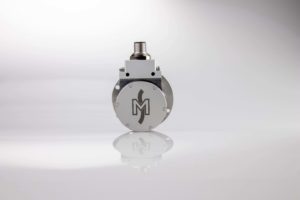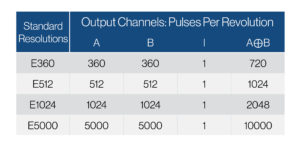Michigan Scientific Corporation’s Wheel Pulse Transducer (WPT) is a compact encoder system that is designed to attach to the wheel of a vehicle. Encoder signals from the WPT can be used to calculate the rotational velocity, the angular position, and the direction of rotation of a wheel. These measurements are commonly used to track the position of a vehicle for applications such as electric vehicle development and autonomous vehicle tracking.
Autonomous Vehicle Tracking
Autonomous vehicles rely on Global Navigation Satellite System (GNSS) technology to track their position, but these systems can fail in urban, indoor, or underground environments. In areas where GNSS tracking is not available, other technologies such as Wheel Pulse Transducers or accelerometers must be used to track the location of vehicles. WPT systems can be used to track the position of autonomous forklifts inside of warehouses, or autonomous underground mining equipment. Additionally, the WPT system can be used to test and validate the accuracy of accelerometer-based systems.
WPT Sensor Description
The assembly is designed to
Encoder Signal Conditioners
WPT optical encoder resolutions up to 5,000 pulses per revolution (ppr) are available. Standard resolutions include 360 ppr, 512 ppr, 1024 ppr, and 5,000 ppr. Additional resolutions are available upon request. All encoder choices have four standard encoder outputs: A, B, I, and A⊕B. Outputs A and B are in quadrature, meaning they are 90 degrees out of phase. Output A⊕B is the exclusive OR of the two channels, which doubles the standard resolution of the encoder. The outputs, 0 to 5 digital volt pulses, can drive TTL loads.
The Michigan Scientific EC-LV Encoder Signal Conditioner converts the 0 to 5 digital volt pulses of the WPT sensor encoder to linear voltages proportional to angular position and angular velocity. The EC-LV can be added in-line with the stator cable and does not require and additional programing. The external switches allow the user to select the range of speed and the direction of rotation.
If you are interested in learning more about how the Wheel Pulse Transducer can be used for your application, please contact a Michigan Scientific Representative today.

